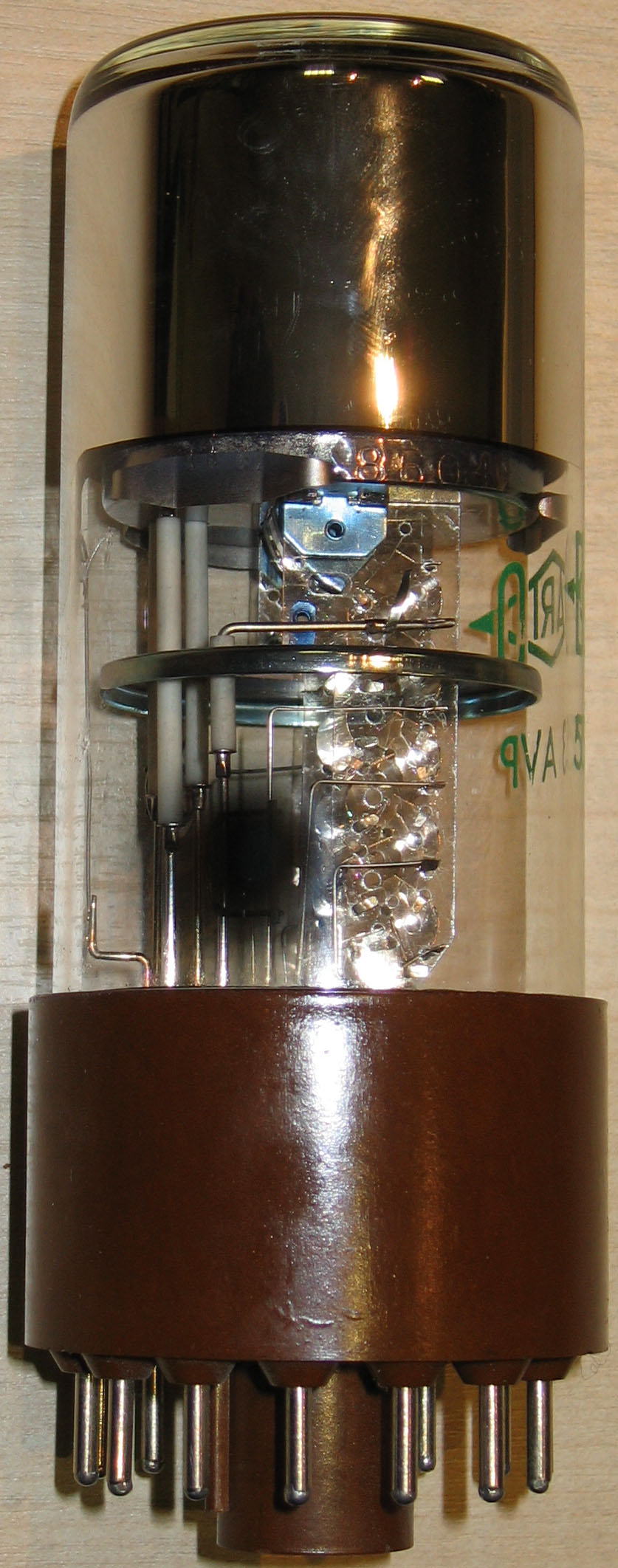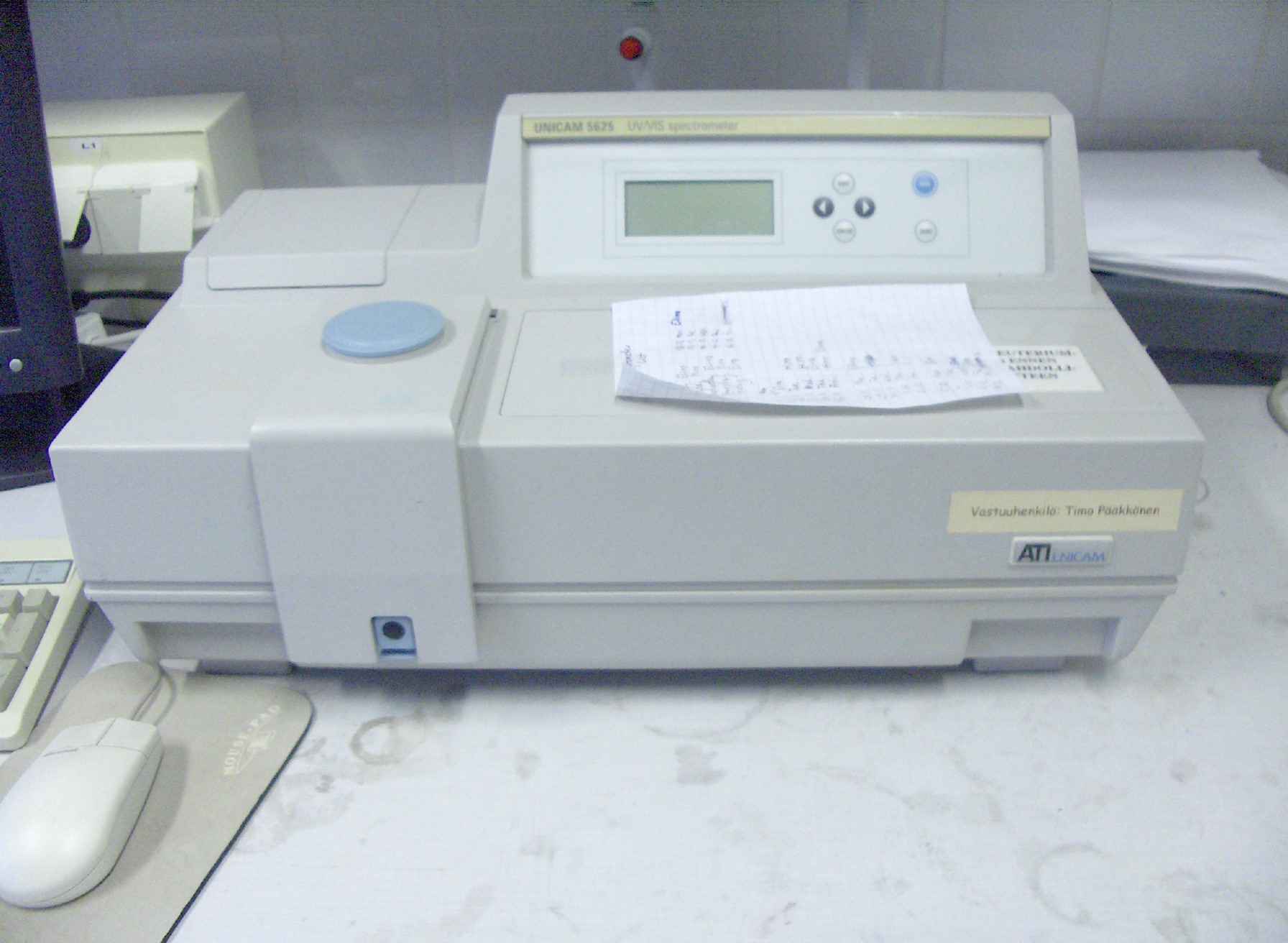|
Spectroradiometer
A spectroradiometer is a light measurement tool that is able to measure both the wavelength and amplitude of the light emitted from a light source. Spectrometers discriminate the wavelength based on the position the light hits at the detector array allowing the full spectrum to be obtained with a single acquisition. Most spectrometers have a base measurement of counts which is the un-calibrated reading and is thus impacted by the sensitivity of the detector to each wavelength. By applying a calibration, the spectrometer is then able to provide measurements of spectral irradiance, spectral radiance and/or spectral flux. This data is also then used with built in or PC software and numerous algorithms to provide readings or Irradiance (W/cm2), Illuminance (lux or fc), Radiance (W/sr), Luminance (cd), Flux (Lumens or Watts), Chromaticity, Color Temperature, Peak and Dominant Wavelength. Some more complex spectrometer software packages also allow calculation of PAR μmol/m2/s, Metamerism, ... [...More Info...] [...Related Items...] OR: [Wikipedia] [Google] [Baidu] |
Spectrophotometry
Spectrophotometry is a branch of electromagnetic spectroscopy concerned with the quantitative measurement of the reflection or transmission properties of a material as a function of wavelength. Spectrophotometry uses photometers, known as spectrophotometers, that can measure the intensity of a light beam at different wavelengths. Although spectrophotometry is most commonly applied to ultraviolet, visible, and infrared radiation, modern spectrophotometers can interrogate wide swaths of the electromagnetic spectrum, including x-ray, ultraviolet, visible, infrared, and/or microwave wavelengths. Overview Spectrophotometry is a tool that hinges on the quantitative analysis of molecules depending on how much light is absorbed by colored compounds. Important features of spectrophotometers are spectral bandwidth (the range of colors it can transmit through the test sample), the percentage of sample-transmission, the logarithmic range of sample-absorption, and sometimes a percentage of ... [...More Info...] [...Related Items...] OR: [Wikipedia] [Google] [Baidu] |
Spectrometer
A spectrometer () is a scientific instrument used to separate and measure spectral components of a physical phenomenon. Spectrometer is a broad term often used to describe instruments that measure a continuous variable of a phenomenon where the spectral components are somehow mixed. In visible light a spectrometer can separate white light and measure individual narrow bands of color, called a spectrum. A mass spectrometer measures the spectrum of the masses of the atoms or molecules present in a gas. The first spectrometers were used to split light into an array of separate colors. Spectrometers were developed in early studies of physics, astronomy, and chemistry. The capability of spectroscopy to determine chemical composition drove its advancement and continues to be one of its primary uses. Spectrometers are used in astronomy to analyze the chemical composition of stars and planets, and spectrometers gather data on the origin of the universe. Examples of spectrometers are ... [...More Info...] [...Related Items...] OR: [Wikipedia] [Google] [Baidu] |
Radiometer
A radiometer or roentgenometer is a device for measuring the radiant flux (power) of electromagnetic radiation. Generally, a radiometer is an infrared radiation detector or an ultraviolet detector. Microwave radiometers operate in the microwave wavelengths. While the term ''radiometer'' can refer to any device that measures electromagnetic radiation (e.g. light), the term is often used to refer specifically to a Crookes radiometer ("light-mill"), a device invented in 1873 in which a rotor (having vanes which are dark on one side, and light on the other) in a partial vacuum spins when exposed to light. A common belief (one originally held even by Crookes) is that the momentum of the absorbed light on the black faces makes the radiometer operate. If this were true, however, the radiometer would spin away from the non-black faces, since the photons bouncing off those faces impart more momentum than the photons absorbed on the black faces. Photons do exert radiation pressure on the ... [...More Info...] [...Related Items...] OR: [Wikipedia] [Google] [Baidu] |
Light Meter
A light meter is a device used to measure the amount of light. In photography, a light meter (more correctly an exposure meter) is used to determine the proper exposure for a photograph. The meter will include either a digital or analog calculator which displays the correct shutter speed and f-number for optimum exposure, given a certain lighting situation and film speed. Similarly, exposure meters are also used in the fields of cinematography and scenic design, in order to determine the optimum light level for a scene. Light meters are used in the general field of architectural lighting design to verify proper installation and performance of a building lighting system, and in assessing the light levels for growing plants. Use in photography The earliest type of light meters were called ''extinction meters'' and contained a numbered or lettered row of neutral density filters of increasing density. The photographer would position the meter in front of his subject and ... [...More Info...] [...Related Items...] OR: [Wikipedia] [Google] [Baidu] |
Spectroradiometry
Radiometry is a set of techniques for measuring electromagnetic radiation, including visible light. Radiometric techniques in optics characterize the distribution of the radiation's power in space, as opposed to photometric techniques, which characterize the light's interaction with the human eye. The fundamental difference between radiometry and photometry is that radiometry gives the entire optical radiation spectrum, while photometry is limited to the visible spectrum. Radiometry is distinct from quantum techniques such as photon counting. The use of radiometers to determine the temperature of objects and gasses by measuring radiation flux is called pyrometry. Handheld pyrometer devices are often marketed as infrared thermometers. Radiometry is important in astronomy, especially radio astronomy, and plays a significant role in Earth remote sensing. The measurement techniques categorized as ''radiometry'' in optics are called ''photometry'' in some astronomical application ... [...More Info...] [...Related Items...] OR: [Wikipedia] [Google] [Baidu] |
Raw Image Format
A camera raw image file contains unprocessed or minimally processed data from the image sensor of either a digital camera, a motion picture film scanner, or other image scanner. Raw files are named so because they are not yet processed and therefore are not ready to be Photographic printing, printed, viewed or edited with a bitmap graphics editor. Normally, the image is processed by a raw converter in a wide-gamut internal color space where precise adjustments can be made before file format conversion, conversion to a viewable file format such as JPEG or PNG for storage, printing, or further manipulation. There are dozens of raw formats in use by different manufacturers of digital image capture equipment. Rationale Raw image files are sometimes incorrectly described as "digital Negative (photography), negatives", but neither are they negatives nor do the unprocessed files constitute visible images. Rather, the Raw datasets are more like Exposure (photography), exposed but Lat ... [...More Info...] [...Related Items...] OR: [Wikipedia] [Google] [Baidu] |
Dark Frame Subtraction
In digital photography, dark-frame subtraction is a way to reduce image noise in photographs shot with long exposure times, at high ISO sensor sensitivity or at high temperatures. It takes advantage of two components of image noise that remain the same from one shot to the next, dark current and fixed-pattern noise. Noise from the image sensor include hot pixels, which light up more brightly than surrounding pixels. The technique works by taking a picture with the shutter closed and subtracting that electronically from the original photo exhibiting the noise. A dark frame is an image captured with the sensor in complete darkness (i.e. with a closed shutter or the lens and viewfinder capped). Such a dark frame is essentially an image of noise produced by the sensor. A dark frame, or an average of several dark frames, can then be subtracted from subsequent images to correct for fixed-pattern noise. It is important that dark frames are taken at the same ISO sensitivity and expos ... [...More Info...] [...Related Items...] OR: [Wikipedia] [Google] [Baidu] |
Public Lab
The Public Laboratory for Open Technology and Science (Public Lab) is a non-profit organization that facilitates collaborative, open source environmental research in a model known as Community Science. It supports communities facing environmental justice issues in a do it yourself approach to environmental monitoring and advocacy. Public Lab grew out of a grassroots effort to take aerial photographs of the BP Oil Spill in the Gulf of Mexico in 2010. Since then, they have launched a range of projects, including an open source spectrometer, multi-spectral camera, and low-cost microscope. Balloon Mapping The aerial photography technique Public Lab is best known for involves lifting cameras above an area using tethered helium-filled weather balloons. Open source environmental monitoring Public Lab's community develops open source hardware Open-source hardware (OSH) consists of physical artifacts of technology designed and offered by the open-design movement. Both fre ... [...More Info...] [...Related Items...] OR: [Wikipedia] [Google] [Baidu] |
Solar-blind Technology
Solar-blind technology is a set of technologies to produce images without interference from the Sun. This is done by using wavelengths of ultraviolet light that are totally absorbed by the ozone layer, yet are transmitted in the Earth's atmosphere. Wavelengths from 240 to 280 nm are completely absorbed by the ozone layer. Elements of this technology are ultraviolet light sources, ultraviolet image detectors, and filters that only transmit the range of wavelengths that are blocked by ozone. A system will also have a signal processing system, and a way to display the results (image). Ultraviolet sources Ultraviolet illumination can be produced from longer wavelengths using non-linear optical materials. These can be a second harmonic generator. They must have a suitable birefringence in order to phase match the output frequency doubled UV light. One compound commercially used is L-arginine phosphate monohydrate known as LAP. Research is underway for substances that are very non-li ... [...More Info...] [...Related Items...] OR: [Wikipedia] [Google] [Baidu] |
Photomultiplier
A photomultiplier is a device that converts incident photons into an electrical signal. Kinds of photomultiplier include: * Photomultiplier tube, a vacuum tube converting incident photons into an electric signal. Photomultiplier tubes (PMTs for short) are members of the class of vacuum tubes, and more specifically vacuum phototubes, which are extremely sensitive detectors of light in the ultraviolet, visible, and near-infrared ranges of the electromagnetic spectrum. ** Magnetic photomultiplier, developed by the Soviets in the 1930s. ** Electrostatic photomultiplier, a kind of photomultiplier tube demonstrated by Jan Rajchman of RCA Laboratories in Princeton, NJ in the late 1930s which became the standard for all future commercial photomultipliers. The first mass-produced photomultiplier, the Type 931, was of this design and is still commercially produced today. * Silicon photomultiplier, a solid-state device converting incident photons into an electric signal. Silicon photomultiplie ... [...More Info...] [...Related Items...] OR: [Wikipedia] [Google] [Baidu] |






